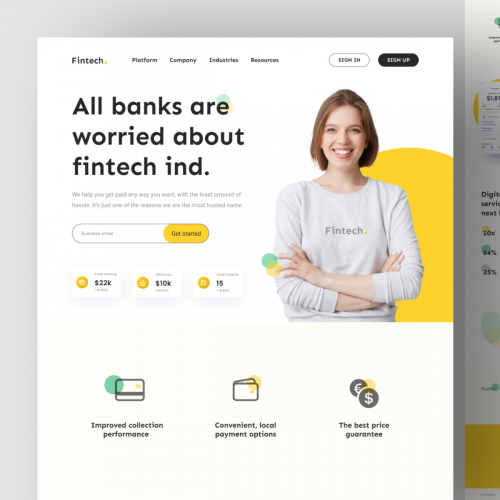The Role of User-Centered Website Design in Increasing Customer Retention
The Role of User-Centered Website Design in Increasing Customer Retention
Blog Article
Boost Interaction With Cutting-edge Web Site Layout Solutions
In the world of electronic communication, the significance of innovative website design solutions can not be overstated. An attentively crafted user experience, underpinned by calculated aesthetic layout and interactive components, can substantially improve customer involvement. By discovering various methods such as receptive style and tailored material, services can produce a platform that not just mesmerizes individuals however additionally cultivates lasting commitment. The challenge lies in understanding the nuances of individual actions and choices. This increases a crucial concern: what particular techniques can be implemented to make certain that a web site remains engaging and user-centric?

Comprehending User Experience
Comprehending customer experience (UX) is essential for developing effective internet site layout options, as it directly affects just how users communicate with digital systems. An extensive UX approach encompasses numerous elements, including functionality, individual, and accessibility fulfillment, every one of which add to the total efficiency of an internet site.
To start with, usability focuses on how easily individuals can browse and discover the information they look for. Access makes certain that all individuals, including those with disabilities, can properly connect with the site.
Moreover, recognizing individual personalities is essential for customizing the experience to meet particular target market demands. By carrying out individual research study and screening, developers can collect insights that educate style choices, guaranteeing the website not only fulfills aesthetic goals however additionally satisfies functional requirements. Ultimately, a thoughtful approach to UX design fosters involvement, urges retention, and enhances general customer fulfillment, which are important for the success of any kind of electronic platform.
Visual Design Methods
Incorporating effective visual design techniques is necessary for recording user attention and boosting the total user experience on a website. A well-thought-out visual pecking order overviews individuals with the content, allowing them to conveniently browse and soak up info. This can be accomplished through the calculated usage of typography, color pattern, and spacing, which jointly develop a appealing and natural layout.
Color plays a crucial duty in stimulating feelings and establishing brand name identification. Utilizing a well balanced color combination that aligns with the brand name's values can foster familiarity and trust fund. Furthermore, incorporating premium images and graphics improves aesthetic appeal and can substantially improve individual interaction.
Whitespace, commonly ignored, is equally vital as it permits content to breathe and prevents overwhelming individuals with mess. It promotes much easier analysis and understanding, leading to an extra satisfying surfing experience.
Lastly, uniformity in design aspects-- such as switch styles, symbols, and typefaces-- guarantees a seamless customer trip, reinforcing the brand's professionalism. By strategically implementing these visual design methods, web sites can not just draw in visitors yet also urge them to stay longer and involve even more deeply with the web content.
Interactive Elements for Interaction
Engaging customers properly usually pivots on the execution of interactive aspects that invite engagement and promote a dynamic surfing experience. These aspects, including tests, polls, and interactive infographics, urge users to proactively take part instead than passively take in content. By incorporating such functions, websites can not only record interest but likewise boost individual retention.

Gamification is another effective approach. Integrating game-like aspects, such as success or benefits for completing jobs, can change mundane communications into satisfying experiences. This strategy not just increases interaction but likewise encourages customers to return, producing a faithful audience.
Furthermore, interactive elements can facilitate social sharing, intensifying an internet site's reach. Attributes like remark sections, share switches, and user-generated web content locations foster neighborhood interaction, turning site visitors right into energetic participants. website design. Eventually, the strategic use interactive aspects is important for developing a interesting and compelling website that reverberates with users
Receptive and Adaptive Layout
A well-designed internet site should focus on adaptive and receptive layout to ensure optimum individual experiences across a variety of tools and display sizes. Receptive design employs fluid grids and adaptable pictures, permitting the layout to instantly readjust based on the visitor's screen size. This strategy makes sure that users can quickly browse and interact with the material, despite whether they are using a smart device, desktop, or tablet .
In contrast, flexible design utilizes predefined layouts that are tailored to certain tool groups. This means that the web site identifies the sort of device being used and offers the appropriate layout, which can improve loading times and maximize the screen of vital elements. While both techniques aim Going Here to improve use, responsive design is typically favored for its fluidity and smooth shift in between gadgets.
Including receptive and adaptive style not only enhances individual fulfillment but likewise positively affects internet search engine rankings. Browse engines focus on mobile-friendly sites, therefore increasing visibility and attracting more visitors. Spending in these layout methods is vital for organizations looking to involve their audience properly and keep an affordable edge in today's digital landscape. website design.
Studying Customer Comments and Data
Individual responses and information analysis are crucial elements of reliable website style, as they give beneficial insights into customer actions useful reference and preferences. By methodically collecting and checking out user comments via studies, usability screening, and analytics tools, designers can identify discomfort points and locations for improvement. This data-driven method allows businesses to tweak their internet site elements, making sure that the customer experience aligns with audience expectations.
Assessing metrics such as bounce rates, time on page, and click-through rates uses a quantitative viewpoint on individual involvement. These metrics help developers discern which web content reverberates and which locations may call for optimization. A/B screening can be employed to assess variants in layout, permitting developers to make educated decisions based on customer interactions.
Incorporating individual responses not only improves website usability however also promotes a sense of community and trust fund. Engaging with individuals with comments loopholes grows commitment and encourages repeat visits. Ultimately, leveraging customer comments and data analysis is indispensable to creating a dynamic, user-centered site that adapts to evolving customer requirements and choices, thereby driving greater involvement and contentment.
Final Thought

An attentively crafted individual experience, underpinned by tactical visual design and interactive elements, can considerably enhance user engagement.Integrating effective aesthetic style techniques is vital for recording customer attention and improving the total user experience on a site.User comments and data evaluation are vital elements of effective internet site design, as they offer valuable insights into customer actions and preferences. Ultimately, leveraging user feedback and information analysis is integral to developing a vibrant, user-centered web site that adapts to progressing user demands and choices, therefore driving higher engagement and satisfaction.
In final thought, cutting-edge internet site layout solutions dramatically boost user interaction by prioritizing customer experience, utilizing effective aesthetic techniques, and incorporating interactive components.
Report this page